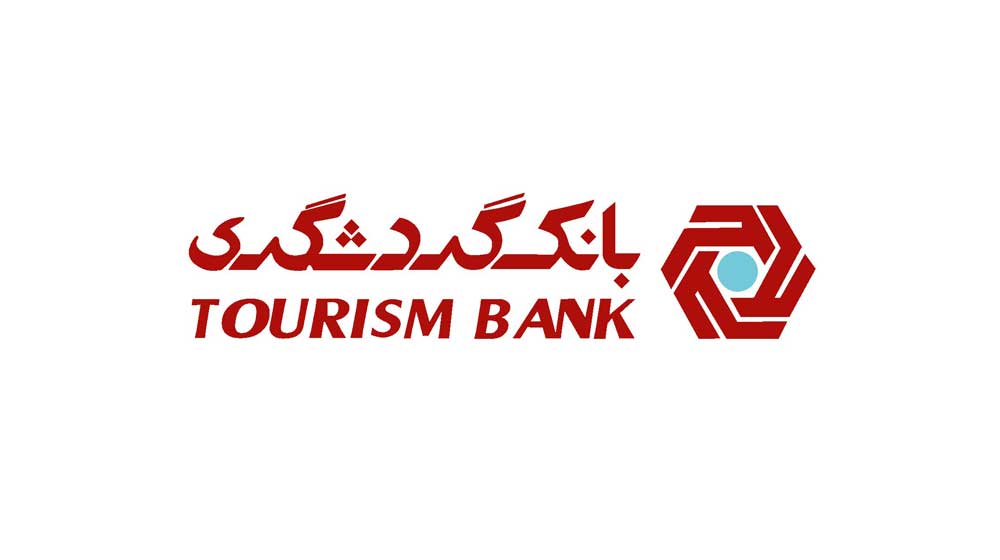
Robotic process automation in banking industry: a case study on Deutsche Bank Journal of Banking and Financial Technology RPA combined with Intelligent automation will not only remove the potential of errors but will also intelligently capture the data to build P’s. An automatic approval matrix can be constructed and forwarded for approvals without the need […]
Robotic process automation in banking industry: a case study on Deutsche Bank Journal of Banking and Financial Technology
RPA combined with Intelligent automation will not only remove the potential of errors but will also intelligently capture the data to build P’s. An automatic approval matrix can be constructed and forwarded for approvals without the need for human participation once the automated system is in place. Download this e-book to learn how customer experience and contact center leaders in banking are using Al-powered automation. You want to offer faster service but must also complete due diligence processes to stay compliant. In addition to RPA, banks can also use technologies like optical character recognition (OCR) and intelligent document processing (IDP) to digitize physical mail and distribute it to remote teams. You’ll have to spend little to no time performing or monitoring the process.
- Hyperautomation can help financial institutions deal with these pressures by reducing costs, increasing productivity, enabling a better customer experience, and ensuring regulatory compliance.
- JPMorgan, for example, is using bots to respond to internal IT requests, including resetting employee passwords.
- E2EE can be used by banks and credit unions to protect mobile transactions and other online payments, allowing money to be transferred securely from one account to another or from a customer to a store.
- An association’s inability to act as indicated by principles of industry, regulations or its own arrangements can prompt lawful punishments.
- Banks continue to prioritize AI investment to stay ahead of the competition and offer customers increasingly sophisticated tools to manage their money and investments.
- Automation of routine tasks streamlines processes, allowing human resources to focus on complex problem-solving and strategic planning.
Moreover, AI algorithms analyze vast datasets in real-time, enabling financial institutions to identify patterns and trends. This capability is particularly valuable in risk management and fraud detection. AI’s predictive analytics contribute to a proactive approach, minimizing financial risks and safeguarding against fraudulent activities. Banks can leverage the massive quantities of data at their disposal by combining data science, banking automation, and marketing to bring an algorithmic approach to marketing analysis.
It has been transforming the banking industry by making the core financial operations exponentially more efficient and allowing banks to tailor services to customers while at the same time improving safety and security. Although intelligent automation is enabling banks to redefine how they work, it has also raised challenges regarding protection of both consumer interests and the stability of the financial system. You can foun additiona information about ai customer service and artificial intelligence and NLP. This article presents a case study on Deutsche Bank’s successful implementation of intelligent automation and also discusses the ethical responsibilities and challenges related to automation and employment. We demonstrate how Deutsche Bank successfully automated Adverse Media Screening (AMS), accelerating compliance, increasing adverse media search coverage and drastically reducing false positives. This research contributes to the academic literature on the topic of banking intelligent automation and provides insight into implementation and development. Being an automation solution provider for multiple industries, AutomationEdge has scaled multiple banking and financial services providers in accelerating their business process efficiency and workplace experience.
Outdated Mobile Experiences
RPA, on the other hand, is thought to be a very effective and powerful instrument that, once applied, ensures efficiency and security while keeping prices low. Automation is being utilized in numerous regions inclusive of manufacturing, transport, utilities, defense centers or operations, and lately, records technology.
But given the high volume of complex data in banking, you’ll need ML systems for fraud detection. During the pandemic, Swiss banks like UBS used credit robots to support the credit processing staff in approving requests. The support from robots helped UBS process over 24,000 applications in 24-hour operating mode. A system can relay output to another system through an API, enabling end-to-end process automation. Reskilling employees allows them to use automation technologies effectively, making their job easier. The company decided to implement RPA and automate the entire process, saving their staff and business partners plenty of time to focus on other, more valuable opportunities.
Unlocking the Power of Automation: How Banks Can Drive Growth – The Financial Brand
Unlocking the Power of Automation: How Banks Can Drive Growth.
Posted: Thu, 18 Jan 2024 08:00:00 GMT [source]
Naturally, banks encounter distinct regulatory oversight, concerning issues such as model interpretability and unbiased decision making, that must be comprehensively tackled before scaling any application. Banks that foster integration between technical talent and business leaders are more likely to develop scalable gen AI solutions that create measurable value. In recent years, AI has revolutionized various aspects of our world, including the banking industry. In this video, Jordan Worm delves into five key areas where AI is making groundbreaking impacts on banking.
Hyperautomation in Banking: Use Cases & Best Practices
Automation helps banks streamline treasury operations by increasing productivity for front office traders, enabling better risk management, and improving customer experience. Let’s look at some of the leading causes of disruption in the banking industry today, and how institutions are leveraging banking automation to combat to adapt to changes in the financial services landscape. Leveraging process mining and digital twins can help banks to gain process intelligence and identify back-office processes to automate. AI and NLP-enabled intelligent bots can automate these back-office processes involving unstructured data and legacy systems with minimal human intervention. Blanc Labs helps banks, credit unions, and Fintechs automate their processes. Our systems take work off your plate and supercharge process efficiency.
Bank Automation Summit Europe 2024 takes place in Frankfurt – Bank Automation News
Bank Automation Summit Europe 2024 takes place in Frankfurt.
Posted: Tue, 07 May 2024 14:33:03 GMT [source]
While most bankers have begun to embrace the digital world, there is still much work to be done. Banking customers want their queries resolved quickly with a touch of personalization. For that, the customers are willing to interact with automated bots and systems too. Traders, advisors, and analysts rely on UiPath to supercharge their productivity and be the best at what they do.
About this article
And, perhaps most crucially, the client will be at the center of the transformation. The ordinary banking customer now expects more, more quickly, and better results. Banks that can’t compete with those that can meet these standards will certainly struggle to stay afloat in the long run. There is a huge rise in competition between banks as a stop-gap measure, these new market entrants are prompting many financial institutions to seek partnerships and/or acquisition options. At Hitachi Solutions, we specialize in helping businesses harness the power of digital transformation through the use of innovative solutions built on the Microsoft platform. We offer a suite of products designed specifically for the financial services industry, which can be tailored to meet the exact needs of your organization.
But with manual checks, it becomes increasingly difficult for banks to do so. Artificial intelligence (AI) automation is the most advanced degree of automation. With AI, robots can “learn” and make decisions based on scenarios they’ve encountered and evaluated in the past. In customer service, for example, virtual assistants can lower expenses while empowering both customers and human agents, resulting in a better customer experience. AI-powered chatbots and virtual assistants provide instant support, answering queries and facilitating transactions with efficiency and accuracy. Enhancing customer satisfaction simultaneously cuts operational expenses for financial institutions.
Banks face security breaches daily while working on their systems, which leads them to delays in work, though sometimes these errors lead to the wrong calculation, which should not happen in this sector. Banks can do more with less human resources and rip the financial benefits with RPA. A survey in the financial section by PricewaterhouseCoopers shows that 30% of the respondents were not only experimenting with RPA but were on the way to adopting it enterprise-wide.
When you automate these tasks, employees find work more fulfilling and are generally happier since they can focus on what they do best. Automation can help improve employee satisfaction levels by allowing them to focus on their core duties. The competition in banking will become fiercer over the next few years as the regulations become more accommodating of innovative fintech firms and open banking is introduced. By making faster and smarter decisions, you’ll be able to respond to customers’ fast-evolving needs with speed and precision.
Cybersecurity is expensive but is also the #1 risk for global banks according to EY. The survey found that cyber controls are the top priority for boosting operation resilience automation banking industry according to 65% of Chief Risk Officers (CROs) who responded to the survey. Responsible use of gen AI must be baked into the scale-up road map from day one.
Customers continue to prioritize banks that can offer personalized AI applications that help them gain visibility on their financial opportunities. One of the ways in which the banking sector is meeting this ask is by adopting new technologies, especially those that enable intelligent automation (IA). According to a 2019 report, nearly 85% of banks have already adopted intelligent automation to expedite several core functions. https://chat.openai.com/ Fast-forward to 2020, and banks are now viewed under the same lens as customer-facing organizations like movie theatres, restaurants and hotels. But my point is that advanced technology, customer demand and fintech disruptions have all dramatically changed what constitutes banking and how digital customers expect it to be. When it comes to automating your banking procedures, there are five things to keep in mind.
According to a McKinsey study, AI offers 50% incremental value over other analytics techniques for the banking industry. Over the past decade, the transition to digital systems has helped speed up and minimize repetitive tasks. But to prepare yourself for your customers’ growing expectations, increase scalability, and stay competitive, you need a complete banking automation solution.
What is RPA in Banking?
Only by following a plan that engages all of the relevant hurdles, complications, and opportunities will banks tap the enormous promise of gen AI long into the future. The second factor is that scaling gen AI complicates an operating dynamic that had been nearly resolved for most financial institutions. While analytics at banks have been relatively focused, and often governed centrally, gen AI has revealed that data and analytics will need to enable every step in the value chain to a much greater extent. Business leaders will have to interact more deeply with analytics colleagues and synchronize often-differing priorities.
Moreover, you’ll notice fewer errors since the risk of human error is minimal when you’re using an automated system. The simplest banking processes (like opening a new account) require multiple staff members to invest time. Moreover, the process generates paperwork you’ll need to store for compliance. Many, if not all banks and credit unions, have introduced some form of automation into their operations.
Robotic process automation (RPA) is a software robot technology designed to execute rules-based business processes by mimicking human interactions across multiple applications. As a virtual workforce, this software application has proven valuable to organizations looking to automate repetitive, low-added-value work. The combination of RPA and Artificial Intelligence (AI) is called CRPA (Cognitive Robotic Process Automation) or IPA (Intelligent Process Automation) and has led to the next generation of RPA bots.
The technology is rapidly maturing, and domain expertise is developing among both banks and vendors—many of which are moving away from the one-solution-fits-all “hammer and nail” approach toward more specialized solutions. Despite the advantages, banking automation can be a difficult task for even IT professionals. Banks can automate their processes with the use of technology to boost productivity without complicating procedures that require compliance. Know your customer processes are rule-based and occupy a lot of FTE’s time.
The 2021 Digital Banking Consumer Survey from PwC found that 20%-25% of consumers prefer to open a new account digitally but can’t. For example, Credigy, a multinational financial organization, has an extensive due diligence process for consumer loans. The report highlights how RPA can lower your costs considerably in various ways. For example, RPA costs roughly a third of an offshore employee and a fifth of an onshore employee.
Automation of routine tasks streamlines processes, allowing human resources to focus on complex problem-solving and strategic planning. The key to an exceptional customer experience is to prioritize the customer’s convenience wherever possible. From expediting the new customer onboarding process to making it easy for customers to get answers to pressing questions without having to wait for a response, banks are finding ways to reduce customers through the power of automation. As an added bonus, by eliminating friction around essential tasks, banks are also able to focus on more important things, such as providing personalized financial advice to help customers resolve problems and obtain their financial goals.
The platform helped it seamlessly integrate its own systems with third-party systems for time and cost savings. The bank’s teams used the platform’s cognitive automation technology to perform several tasks quickly and effortlessly, including halving the time it used to take to screen clients as a part of the bank’s know-your-customer process. With these six building blocks in place, banks can evaluate the potential value in each business and function, from capital markets and retail banking to finance, HR, and operations. When large enough, these opportunities can quickly become beacons for the full automation program, helping persuade multiple stakeholders and senior management of the value at stake.
We also have an experienced team that can help modernize your existing data and cloud services infrastructure. With threats to financial institutions on the rise, traditional banks must continue to reinforce their cybersecurity and identity protection as a survival imperative. Risk detection and analysis require a high level of computing capacity — a level of capacity found only in cloud computing technology. Cloud computing also offers a higher degree of scalability, which makes it more cost-effective for banks to scrutinize transactions. Traditional banks can also leverage machine learning algorithms to reduce false positives, thereby increasing customer confidence and loyalty. You’ve seen the headlines and heard the doomsday predictions all claim that disruption isn’t just at the financial services industry’s doorstep, but that it’s already inside the house.
Address resource constraints by letting automation handle time-demanding operations, connect fragmented tech, and reduce friction across the trade lifecycle. Discover smarter self-service customer journeys, and equip contact center agents with data that dramatically lowers average handling times. For legacy organizations with an open mind, disruption can actually be an exciting opportunity to think outside the box, push themselves outside their comfort zone, and delight customers in the process. Book a discovery call to learn more about how automation can drive efficiency and gains at your bank.
Invoice processing is a key business activity that could take the accountant or team of accountants a significant amount of time to guarantee the balance comparisons are right. Back-and-forth references and logins into various systems necessitate a hawk’s eye to ensure no mistakes are made, and the figures are compared appropriately. [Exclusive Free Webinar] Automate banking processes with automated workflows. With RPA and automation, faster trade processing – paired with higher bookings accuracy – allows analysts to devote more attention to clients and markets.
To Empower Employees
For example- one of our clients HDFC bank had been facing huge challenges in process inconsistency and a high rate of errors that were leading to lower revenue and higher operational costs. To process a single loan application through HDFC bank processing time was 40 minutes. But leveraging the AutomationEdge RPA solution made the process a lot simple and helped the banking staff t bring down the time spent on a loan application from 40 minutes to 20 minutes. Bank employees deal with voluminous data from customers and manual processes are prone to errors. With huge data extraction and manual processing of banking operations lead to errors. Moreover, a single error in the important banking process leads to the case of theft, fraud, and money laundering case.
For example, a sales rep might want to grow by exploring new sales techniques and planning campaigns. They can focus on these tasks once you automate processes like preparing quotes and sales reports. The cost of paper used for these statements can translate to a significant amount. Automation and digitization can eliminate the need to spend paper and store physical documents.
- Just as the smartphone catalyzed an entire ecosystem of businesses and business models, gen AI is making relevant the full range of advanced analytics capabilities and applications.
- Your employees will have more time to focus on more strategic tasks by automating the mundane ones.
- This capability is particularly valuable in risk management and fraud detection.
- This included how banks stipulated interest rates for lending, identified creditworthy cohorts and facilitated banking transactions.
- As the cliché goes, innovation is a critical differentiator that distinguishes the wheat from the chaff.
- Bank automation can assist cut costs in areas including employing, training, acquiring office equipment, and paying for those other large office overhead expenditures.
According to reports, RPA in banking sector is expected to reach $1.12 billion by 2025. Also, by leveraging AI technology in conjunction with RPA, the banking industry can implement automation in the complex decision-making banking process like fraud detection, and anti-money laundering. The final item that traditional banks need to capitalize on in order to remain relevant is modernization, specifically as it pertains to empowering their workforce. Modernization drives digital success in banking, and bank staff needs to be able to use the same devices, tools, and technologies as their customers. For example, leading disruptor Apple — which recently made its first foray into the financial services industry with the launch of the Apple Card — capitalizes on the innovative design on its devices. When it comes to maintaining a competitive edge, personalizing the customer experience takes top priority.
In other ways, a gen AI scale-up is like nothing most leaders have ever seen. Banking institutions are under increased pressure for digital transformation. Customers demand automated experiences with self-service capabilities, but they also want interactions to feel personalized and uniquely human. Fifth, traditional banks are increasingly embracing IT into their business models, according to a study.
Implementing automation allows you to operate legacy and new systems more resiliently by automating across your system infrastructure. They’ll demand better service, 24×7 availability, and faster response times. AI and ML algorithms can use data to provide deep insights into your client’s preferences, needs, and behavior patterns.
Hyperautomation can help financial institutions deal with these pressures by reducing costs, increasing productivity, enabling a better customer experience, and ensuring regulatory compliance. Management teams with early success in scaling gen AI have started with a strategic view of where gen AI, AI, and advanced analytics more broadly could play a role in their business. This view can cover everything from highly transformative business model changes to more tactical economic improvements based on niche productivity initiatives. As a result, the institution is taking a more adaptive view of where to place its AI bets and how much to invest. But given extensive industry regulations, banks and other financial services organizations need a comprehensive strategy for approaching AI. Financial services organizations are embracing artificial intelligence (AI) for various reasons, such as risk management, customer experience and forecasting market trends.
The banks have to ensure a streamlined omnichannel customer experience for their customers. Customers expect the financial institutions to keep a tab of all omnichannel interactions. They don’t want to repeat their query every time they’re talking to a new customer service agent. RPA, or robotic process automation in finance, is an effective solution to the problem. For a long time, financial institutions have used RPA to automate finance and accounting activities.
They use NLP to examine data sets to make more informed decisions around key investments and wealth management. As a result, it’s not enough for banks to only be available when and where customers require these organizations. Banks also need to ensure data safety, customized solutions and the intimacy and satisfaction of an in-person meeting on every channel online. For centuries, banks demonstrated expertise in keeping, lending and saving money. This included how banks stipulated interest rates for lending, identified creditworthy cohorts and facilitated banking transactions.
For example, customers should be able to open a bank account fast once they submit the documents. You can achieve this by automating document processing and KYC verification. For example, banks have conventionally required staff to check KYC documents manually.
Collaboration with regulatory bodies can help establish guidelines for responsible AI use, fostering a trustworthy environment for both customers and stakeholders. In the ever-evolving landscape of the banking industry, artificial intelligence (AI) has emerged as a transformative force, reshaping traditional practices and unlocking new possibilities. As financial institutions embrace the potential of AI, they find themselves at the intersection of innovation and challenge.
Said they believed that the technology will fundamentally change the way they do business. The pressing questions for banking institutions are how and where to use gen AI most effectively, and how to ensure the applications are fully adopted and scaled within their organizations. Second, banks must use their technical advantages to develop more efficient procedures and outcomes.
Customers want a bank they can trust, and that means leveraging automation to prevent and protect against fraud. The easiest way to start is by automating customer segmentation to build more robust profiles that provide definitive insight into who you’re working with and when. To that end, you can also simplify the Know Your Customer process by introducing automated verification services. In addition to real-time support, modern customers also demand fast service.
Of course, you don’t need to implement that automation system overnight. With cloud computing, you can start cybersecurity automation with a few priority accounts and scale over time. Banks also need to evaluate their talent acquisition strategies regularly, to align with changing priorities. They should approach skill-based hiring, resource allocation, and upskilling programs comprehensively; many roles will need skills in AI, cloud engineering, data engineering, and other areas. And as always, retaining talent means more than offering competitive pay. Clear career development and advancement opportunities—and work that has meaning and value—matter a lot to the average tech practitioner.
The rise of AI in banking is a transformative journey marked by unprecedented opportunities and formidable challenges. As the industry embraces innovation, it must do so responsibly, ensuring that the benefits of AI are realized without compromising ethical standards and inclusivity. By striking a balance, the marriage of AI and banking can herald a new era of efficiency, customer-centric services, and sustainable growth. The UiPath Business Automation Platform empowers your workforce with unprecedented resilience—helping organizations thrive in dynamic economic, regulatory, and social landscapes. The world’s top financial services firms are bullish on banking RPA and automation.
Using automation to create a cybersecurity framework and identity protection protocols can help differentiate your bank and potentially increase revenue. You can get more business from high-value individual accounts and accounts of large companies that expect banks to have a top-notch security framework. Implementing RPA can help improve employee satisfaction and productivity by eliminating the need to work on repetitive tasks. Finally, scaling up gen AI has unique talent-related challenges, whose magnitude will depend greatly on a bank’s talent base.
This is due to the fact that automation provides robust payment systems that are facilitated by e-commerce and informational technologies. With RPA, in any other case, the bulky account commencing procedure will become a lot greater straightforward, quicker, and more accurate. Automation systematically removes the facts transcription mistakes that existed among the center banking gadget and the brand new account commencing requests, thereby improving the facts high-satisfactory of the general gadget. Keeping daily records of business transactions and profit and loss allows you to plan ahead of time and detect problems early.
Banking Automation is the process of using technology to do things for you so that you don’t have to. Because of the multiple benefits it provides, automation has become a valuable tool in almost all businesses, Chat PG and the banking industry cannot afford to operate without it. Banks and financial organizations must provide substantial reports that show performance, statistics, and trends using large amounts of data.
Instead of humans processing data manually, simple validation of customer information from 2 systems can take seconds instead of minutes with bots. Introducing bots for such manual processes can reduce processing costs by 30% to 70%. Several processes in the banks can be automated to free up the manpower to work on more critical tasks. RPA in banking industry can be leveraged to automate multiple time-consuming, repetitive processes like account opening, KYC process, customer services, and many others. Using RPA in banking operations not only streamlines the process efficiency but also enables banking organizations to make sure that cost is reduced and the process is executed at an efficient time.
Whether it’s far automating the guide procedures or catching suspicious banking transactions, RPA implementation proved instrumental in phrases of saving each time and fees compared to standard banking solutions. Insights are discovered through consumer encounters and constant organizational analysis, and insights lead to innovation. However, insights without action are useless; financial institutions must be ready to pivot as needed to meet market demands while also improving the client experience. Automation is the advent and alertness of technology to provide and supply items and offerings with minimum human intervention.
And, loathe though we are to be the bearers of bad news, there’s truth to that sentiment. Despite some initial setbacks, fintech has finally made good on its promise to transform the way banks do business, leading 88% of legacy banking institutions to report that they fear losing revenue to financial technology companies. AI’s integration into banking operations brings forth a myriad of opportunities, promising increased efficiency, enhanced customer experiences, and data-driven decision-making.













